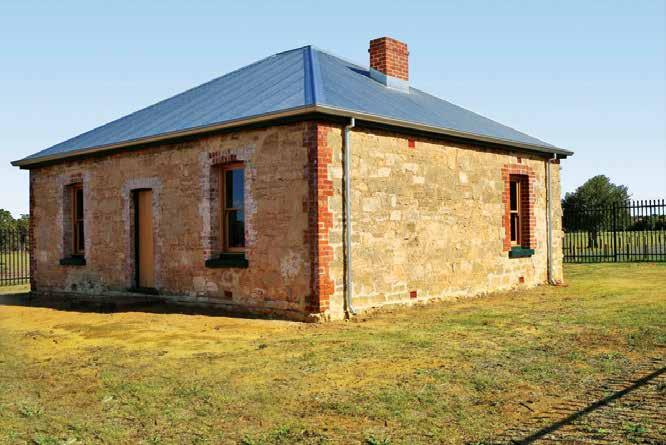
11 minute read
The House That Jack Built
BY LLOYD GORMAN
AT ABOUT 108 YEARS OLD, THE SMALL COTTAGE THAT IS DUFFY HOUSE IN WOODVALE IS THOUGHT TO BE THE OLDEST SURVIVING BUILDING IN THE CITY OF JOONDALUP. IT CERTAINLY HAS A LONG AND SIGNIFICANT HISTORY IN THE LOCALITY AND STRONG IRISH HERITAGE AS THE FOLLOWING STORY (‘DUFFY HOUSE BROUGHT BACK FROM THE BRINK’) – WHICH WAS FIRST PUBLISHED TWO YEARS AGO IN THE SEPTEMBER EDITION OF IRISH SCENE – REVEALS. AT THAT TIME THE STATE GOVERNMENT STUMPED UP MONEY TO RESTORE AND RENOVATE THE LIMESTONE STRUCTURE THAT HAD FALLEN ON HARD TIMES AND WAS IN DANGER OF BEING LOST ENTIRELY.
Advertisement
Between 2019 and 2020 Joondalup council used this grant to carry out ‘stage one’ of restoration. These works included putting in a security fencing (to help prevent anti-social behaviour happening in the house), partial demolition and remedial works of the ‘Old Dairy’ and the installation of power, water and communications services. The roof was also replaced and other structural repairs were carried out while new window were fitted. An access road, car park and bollards also went in. Now the council is moving ahead with stage 2 having carried out community consultation between July and August of this year. Amongst those given a say are residents and landowners within 500 metres of Duffy House, Wanneroo Historical Society and members of the Duffy family. That feedback will go into the council’s deliberations for what will happen there. But the kinds of things being mooted range from a long tree lined entry corridor, Noongar ‘six season’ garden, tree decking around an existing feature tree, shared pedestrian/cycle paths, heritage interpretation of the ‘Old Diary’ and a pop up event space close to the house. Options for Duffy House itself include turning it into a commercial café, restaurant or wine bar or an art gallery/studio space or even as a museum. The area around the house could be used to host weddings, cultural activities and events or seasonal markets and bush tucker tours. All these developments are seen as essential to giving the Irish built homestead a long term future.
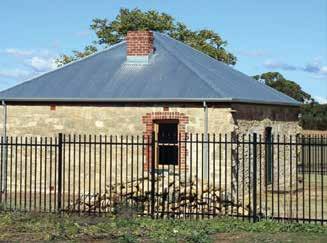
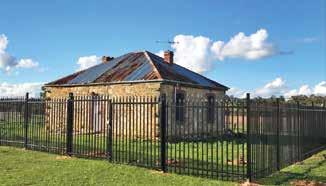
DUFFY HOUSE BROUGHT BACK FROM THE BRINK
First published in Irish Scene, Sept/Oct 2019 edition Restoration work on what is thought to be Joondalup’s original - and oldest - house got underway at the end of July. Duffy House near Woodvale [in Yellagonga Regional Park, and adjacent to Beenup Swamp] is a simple but sturdy stone cottage built between 1911 and 1913. The unassuming looking structure has strong Irish ancestry. Bernard and Sarah (née Campbell) Duffy, emigrated from Ireland to Western Australia on the Hamilla Mitchell in April 1859. Tragedy struck the family early into their new life in WA when Bernard died in 1861 after he fell from a cart and broke his neck. The Irish couple had five children, including their only son Bernard James - aka Barney - who was born in 1849 in Ireland. Barney was one of the first European settlers in the Wanneroo district and became a farmer with 100 acres near Lake Goollelal. A limestone house he built on the property was demolished in 1977. Barney married a Catherine Hughes in July 1873 and they had six children, including a son in 1875 Frederick John. After being schooled in Fremantle and the Christian Brothers College in Perth Jack returned to the family estate in Wanneroo and later took up his own farm in the district, on which part of which Jack Duffy was built. He farmed a market garden and kept horses on the holding. Francis got married to an Eva Matilda Cockman, a daughter of another Wanneroo pioneering family James and Mary Cockman who settled in the area in 1852. [Their homestead Cockman House has been maintained and is a popular local attraction and heritage site]. Frederick and Eva had eight children and in 1911 they commissioned local builder George Dawson to build their home which would become known as Jack Duffy House. One of their children – John ‘Jack’ Duffy – was born 17 May 1913 around the same time the house had been finished. A heritage council assessment of the place includes two recollections of it by two of their sons. Bill Duffy recalled: “My parent’s house was four rooms with a front verandah. [My father] never had time to put a back [room] on it and he never had time to get it plastered or sealed inside. But it was never finished. It was built of limestone from the quarry out there in Perry’s Paddock...where the school is.” Jack recalled that the property was ‘one of the most modern homes in the district...The house stood on 10ha of rich land with a swamp in the front garden and natural bush all around’. He said: “Dr Haines, who lived in East Wanneroo, told Dad it would be healthier not to put a ceiling in the house. So he didn’t. We certainly had plenty of fresh air through the place. Visitors sometimes said it was a bit cold in winter, but I never felt cold there in 80 odd years and there isn’t anywhere cooler in summer. All the walls and floorboards are original and still in good condition. Under the lino the jarrah floorboards are all clean and strong. We held dances on those floorboards, when we had birthdays or surprise parties. We’d roll everything up out of the way and have a good dance.” The property originally consisted of 25 acres of which Frederick Duffy used the swampland as a vegetable garden until his death in 1924. His widow did not continue the veggie garden but did start a small
Main: The restored Duffy House in Woodvale. Left: The house prior to restoration in 2019
dairy. Jack Duffy recalled: ‘We started with one cow and built up from there. Although we boys ran the dairy, it was still a hard time for Mum.” At its peak the family run dairy milked as many as 70 cows, with their milk sent to a Brownes depot in North Perth. Brothers Jack and Bob ran the dairy until 1962 when it moved off the homestead, and finally closed in 1976. The remnants of the dairy are found about 100 metres to the south-west of Duffy House. Jack Duffy never married and life his entire life at the house that bears his name, until his death in 2009, when he was almost 96. A heritage assessment of the property was carried out in July of 2009 and while it found several abandoned vehicles there the place still held most of its original charm and character. “Jack Duffy House may be the oldest surviving building in the City of Joondalup. It found: “Jack Duffy House is a fine example of a simple vernacular building influenced by English Georgian architecture, built of local limestone, and adapted to suit local conditions through the addition of a verandah. The setting of Jack Duffy House has landscape qualities within relatively cleared parkland, with picturesque views. Jack Duffy House has a close relationship with its surroundings. The house, together with the setting, is important evidence of the history of occupation of Woodvale and demonstrates the original development of the site as a farm. The association of the place with the former dairy is important evidence of the occupation and development of Woodvale. Jack Duffy House is associated with the prominent Duffy family – early Wanneroo settlers and long time Wanneroo residents.” The House was found to be intact, but it was also abandoned and allowed to fall into a state of disrepair. The isolated house attracted disturbing anti-social behaviour and vandalism and was slated for demolition. Then in 2015, the Western Australian Planning Commission bought the site with a view to finding a “long term solution” for the historic building. Jessica Stojkovski, the member for Kingsley, and others in
the community and Joondalup council championed and advocated for Duffy House. The other two places mentioned above – Cockman House and Perry’s Paddock, Cottage and Stables – both on Ocean Reef Road have been saved and restored as examples of early local settlement. With so few of them left it would have been almost criminal to allow Duffy House to disappear. In 2018 Joondalup council agreed to accept the future management of the building. “The Woodvale area continues to grow, however, there are now fewer historical sites that remain, so it was vital for our community to keep Duffy House and our heritage link to the Joondalup-Wanneroo suburbs,” The Kingsley MLA said. “The State Government funding will enable the local council to restore and retain the building – having overall management to take it into the future. I’m looking forward to seeing it take shape. The people power behind this campaign has been extraordinary and this is truly a win for our Jack Duffy House may be the oldest surviving building in the City of local community.” In February of this year the state government gave Joondalup. the council the permit it needed to occupy Duffy House and restore it. The government also contributed $300,000 towards the initial repairs, maintenance and conservation works. On July 25 Joondalup announced stage one works had commenced. These included fencing off the area, carrying out repair works on the house itself, by reusing brickwork from the dilapidated dairy – which may feature in future restoration works – and installing power and water to the building. Joondalup Mayor Albert Jacob said he was pleased the property would be refurbished to a condition that will allow it to be appreciated for generations to come. “Duffy House is one of our last surviving links to the pastoral land use in the Wanneroo and Joondalup area many decades ago, and I look forward to seeing what awaits for this significant historical landmark in the future,” Mayor Jacob said. According to Joondalup council, future uses for the site are currently under consideration and further information will be made publicly available in due course.
COTTAGE INDUSTRY
The sight of an old abandoned cottage is nothing unusual in Ireland. In fact, almost everywhere you look the Irish countryside is populated by derelict houses, thatchless cottages, broken big houses and even conquered castles melting back into the landscape around them. A great number of them are scars from the famine when the people who once lived there either died out, emigrated or were evicted from their homes. Sometimes even whole villages stand silent and empty just a short distance from modern day main roads that sweep past. Many stand in picturesque spots with sweeping views. For a relatively small amount (sometimes) you can pick up one of these properties. There are real estate agents who specialise in these ancient and ageing abodes. But restoring these relics is not a task for the faint hearted but in the right hands they can produce spectacular new homes while also saving a little piece of social history.
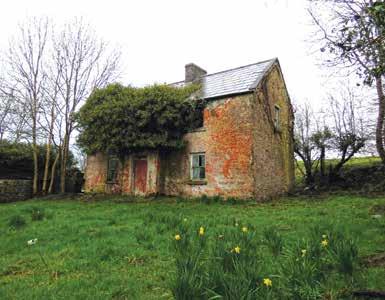
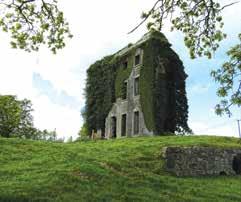
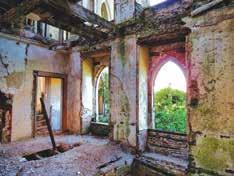
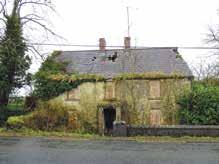
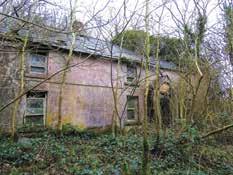
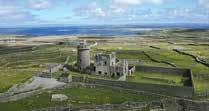

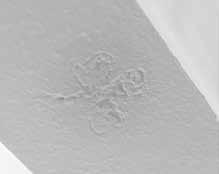
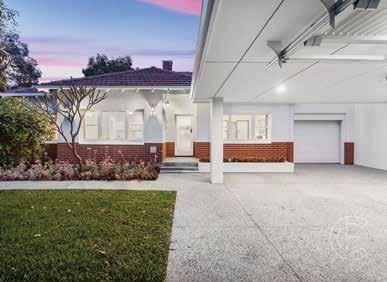
STUCCO SHAMROCK REVEALS A TOUCH OF THE IRISH
When newlyweds Norman and Monica Power built their house in 1951, they wanted a reminder of Norman’s Irish heritage. Their plasterer, a fellow Irishman, didn’t need to be convinced. “In recognition of their joint heritage, the plasterer left a mark in the house,” agent Stephanie Taylor, of Centro Estates, said. “As you walk into the hall, you will see a shamrock etched into the top of the arch Despite 70 years of paint, it’s still there and it’s best seen with the hall light off.” After World War II, timber was in short supply, but Norman managed to get his hands on some quality jarrah for the floors, window frames and other joinery. Most of the timber has been retained – even after a renovation of the three bed two bath home at 208 Daglish Street, Wembley. “The home really showcases the workmanship of the time,” Ms Taylor said. “Back then, it was common to have hideaways in houses to keep valuables and secrets. Go into the main bedroom robe and you find one plank in the floor is easily removed to reveal a small, two-chambered hiding spot.” The Powers had six children who all lived at home until they were young adults. The home stayed in the family when son Tom took over ownership, only relinquishing title in 2019 for the block to be subdivided and the original home extensively renovated. The home, on a 456sqm site, is packed with character features, such as the Australian grass-trees etched on the front door. “These reflect the landscape surrounding the house in the 1950s when many of the trees were found around Lake Monger and Herdsman Lake,” Ms Taylor said. ☘ Special thanks to the real estate editor of the POST newspaper for this story.
Image: realestate.com / Centro Estates

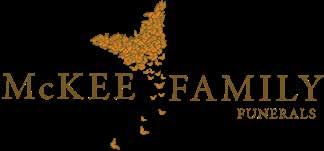
Tony and Veronica McKee
PO Box 994 Hillarys WA 6923










